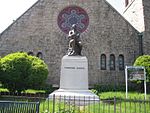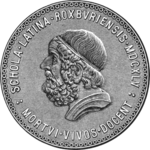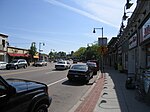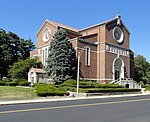Veterans of Foreign Wars Parkway

The Veterans of Foreign Wars Parkway (referred to locally as the VFW Parkway) is a historic parkway in Boston, Massachusetts. The southern terminus of the parkway is at Washington Street at the Dedham-West Roxbury border, from where it travels north and then east, ending at a junction with Centre Street, near the Arnold Arboretum. The highway is almost entirely contained within the West Roxbury neighborhood, although it passes through part of the Chestnut Hill neighborhood near its junction with the West Roxbury Parkway. Most of its length, from Spring Street in West Roxbury to its eastern end, is administered by the Massachusetts Department of Conservation and Recreation (DCR), a successor to the Metropolitan District Commission (MDC) which oversaw the road's construction. The parkway was built in stages between 1930 and 1942, and was designed to provide a parkway connection from the Upper Charles River Reservation to other MDC parks via the West Roxbury Parkway. The DCR portion of the road was listed on the National Register of Historic Places in 2005. The road formerly carried the designation for U.S. Route 1.
Excerpt from the Wikipedia article Veterans of Foreign Wars Parkway (License: CC BY-SA 3.0, Authors, Images).Veterans of Foreign Wars Parkway
Richwood Street, Boston West Roxbury
Geographical coordinates (GPS) Address Nearby Places Show on map
Geographical coordinates (GPS)
| Latitude | Longitude |
|---|---|
| N 42.286111111111 ° | E -71.158611111111 ° |
Address
Richwood Street 35
02132 Boston, West Roxbury
Massachusetts, United States
Open on Google Maps









